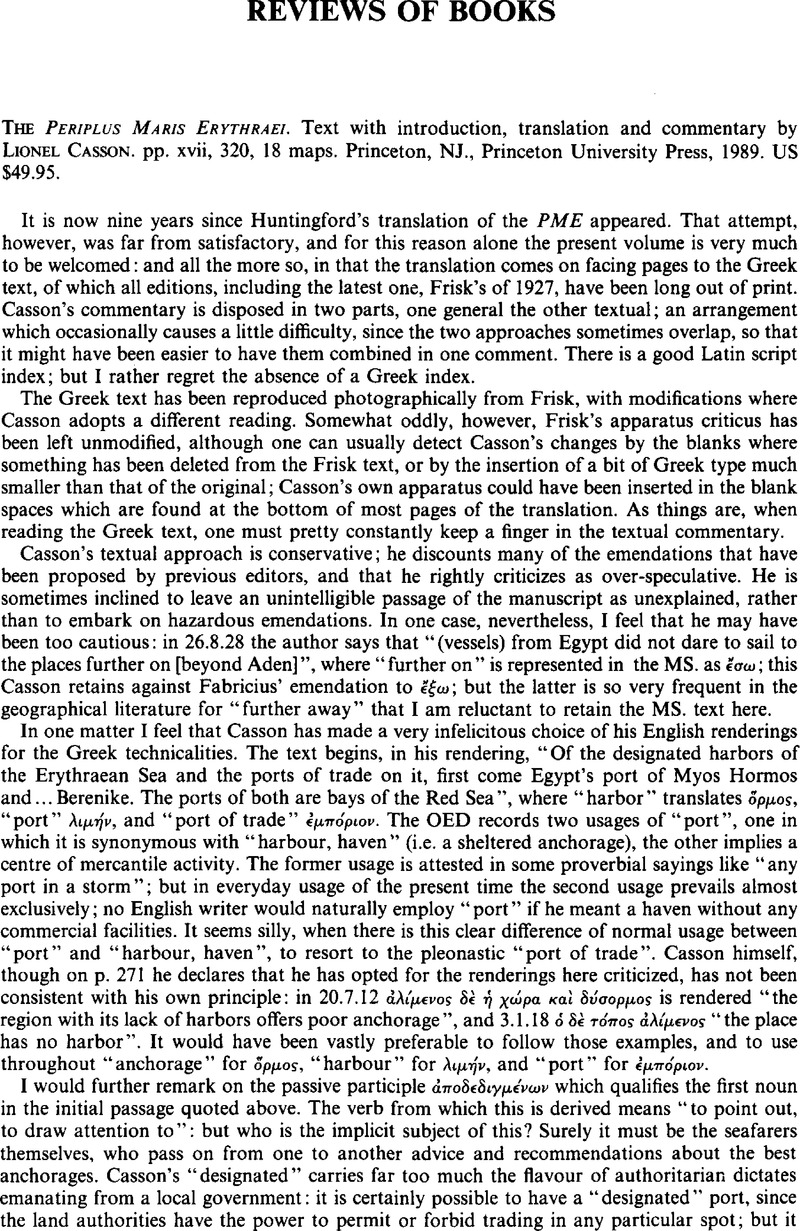No CrossRef data available.
Article contents
The Periplus Maris Erythraei. Text with introduction, translation and commentary by Lionel Casson. pp. xvii, 320, 18 maps. Princeton, NJ., Princeton University Press, 1989. US $49.95.
Review products
Published online by Cambridge University Press: 15 March 2011
Abstract

- Type
- Reviews of Books
- Information
- Copyright
- Copyright © The Royal Asiatic Society 1990
References
page 129 note 1 Cp. Langland's Piers Plowman “Cloth that cometh from the weaving is not comely to wear/Till it be fulled under foot or in fulling stocks/Washen well with water and with teasels cratched/Towked an d teynted and under taylor's hands”.
page 129 note 2 Casson is not strictly correct in saying (p. 170) that the mountains of the Jebel Qamar “approach the coast at Ras Sajir, then, running eastward, again come close to the coast at Mirbat”; the range from Raysut to Mirbat is the J. Qara, not J. Qamar.
page 130 note 3 The MS. has τοτο, emended by Salmasius to τούτου, for which the only possible antecedent is “very deep bay” of ch. 29. The headland of Ras Fartak is “of” this bay in the sense that its great bluff faces east into the bay of Qamar.


